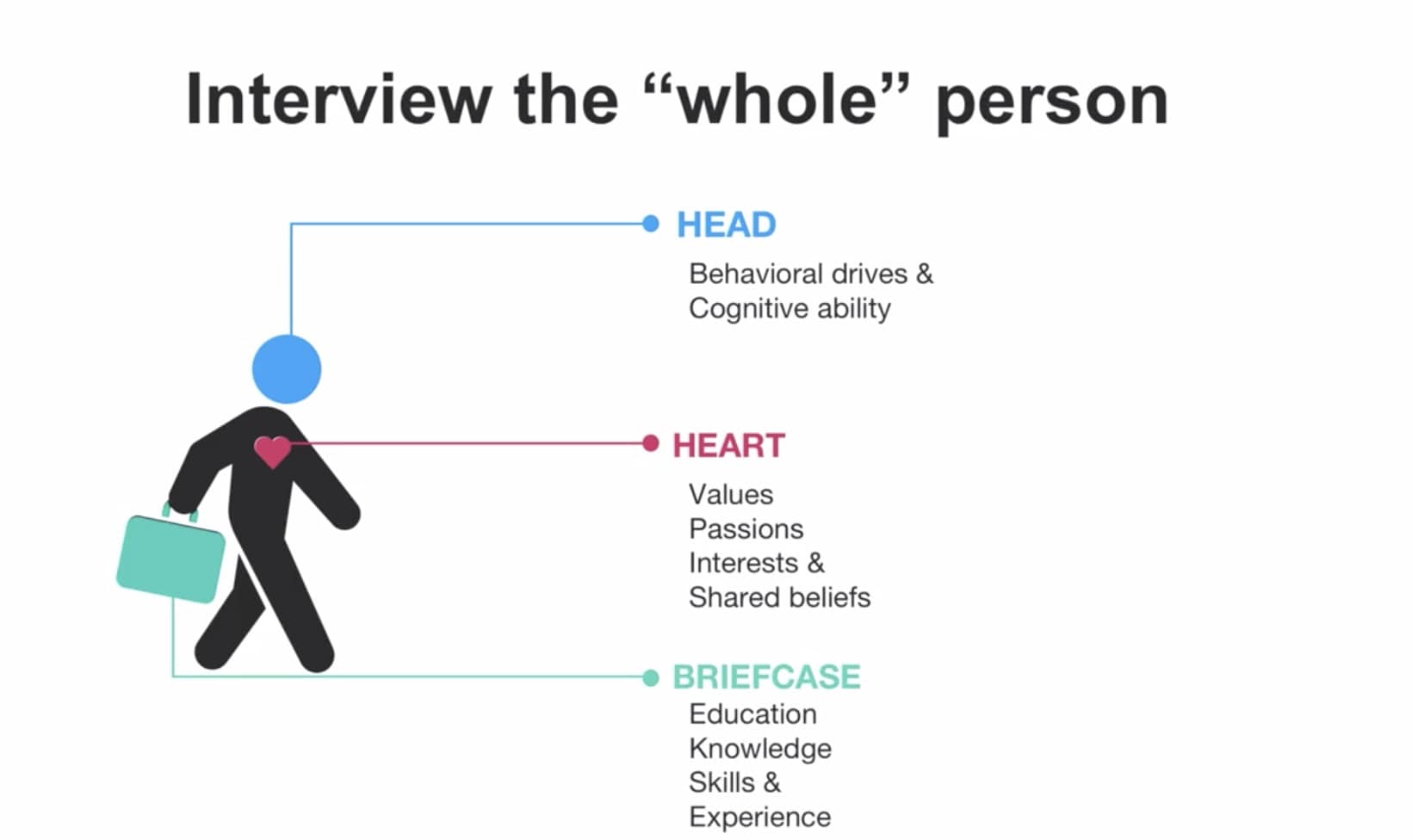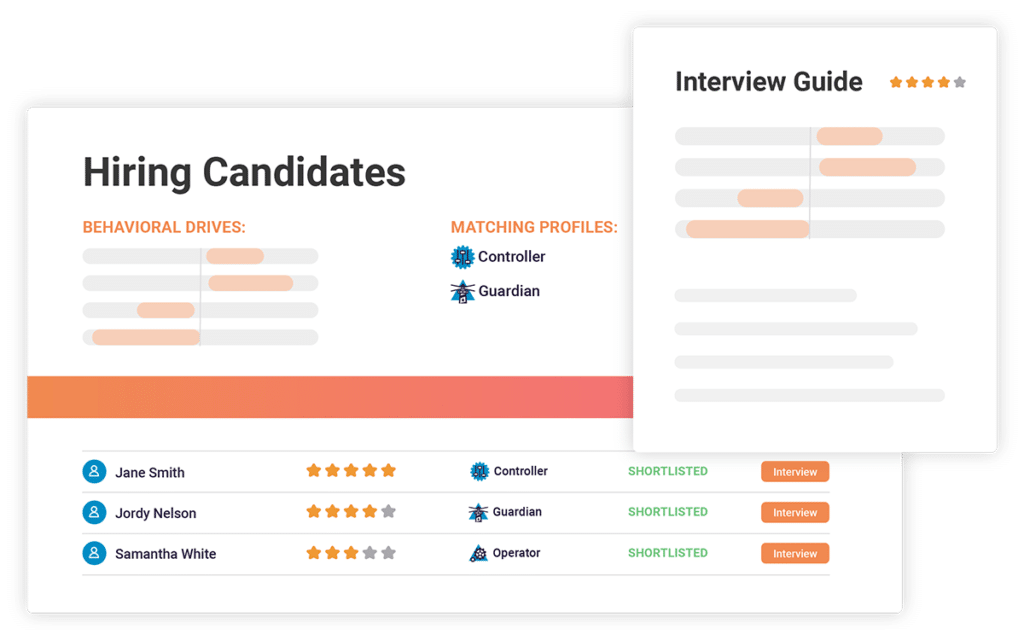7 min read

by: Andrew Barks – Individualist, Guest Columnist, The Predictive Index
Any seasoned HR professional or hiring manager knows there are times when you need a really specific sort of candidate, and settling for someone whose behavioral style doesn’t fit that mold just won’t cut it.
Maybe you need someone who’s risk averse and has a keen attention to detail. Or perhaps the hire has to be super-steady, ready to implement new processes while dealing with a lot of noise and pushback from the old guard.
Whatever the case, you have good reasons for seeking specific behaviors in the role. That emphasis on behavioral data is core to the Head, Heart, Briefcase model we apply to the hiring process at PI. That is, a person’s resume is important, but it may not be as strong a predictor of success as their mental aptitude, personal values, or strongest behavioral drives.

You’re hiring for long-term development.
Let’s say you’ve determined that only certain profiles will truly thrive in this position. How do you attract the right people? Try going by Reference Profile, and tailoring not only your search, but your job descriptions, accordingly.
Words matter, especially when you’ve got very specific needs. So choose them carefully, or else you may end up unpleasantly surprised by the behaviors of your key hires.
Let’s power-walk through each of the 17 PI Reference Profiles, and the specific traits you’d ask for in trying to draw each one:
Attract an Adapter
You’re looking for balance. You’re seeking versatility, flexibility, and an ability to bridge gaps that exist within your team. Try to attract someone who can “see all sides” of a situation, and remember, Adapters can be tough to read!
Attract an Altruist
You’re in need of teamwork—someone that can serve as the glue—so make sure that need is expressed in your job description. Whether this person’s managing others or not, specify that for this role, you need someone who’s detail oriented, clear in the direction they provide, and empathetic with others.
Attract an Analyzer
Details wanted! Don’t mince words if you need an Analyzer to fill an open role. State clearly that you’re seeking someone with high standards—even a healthy dose of skepticism—who won’t make big decisions without the data or facts to back them.

Attract a Captain
You’re looking for a big-picture thinker and a leader, for sure, but also someone who’s non-conforming, and able to think abstractly. If you’re not comfortable asking for a rule-breaker, try advertising for “a leader who is willing to challenge norms.”
Attract a Collaborator
This one can be difficult to get right, because many roles benefit from people who work well with others. But in seeking a true Collaborator, try stating specifically how they’ll collaborate on your team. Maybe that means “a designer who can pivot quickly from task to task, without being shy about reaching out to stakeholders for help.”
Attract a Controller
Don’t use the word “controlling,” but if you need someone who’s loyal, conscientious, and adept at retaining or restoring order, say so. Controllers are thorough, and they gain their “control” through autonomy and the freedom to problem solve. Make sure that’s clear to the candidates who would bring those attributes to the table.
Attract a Craftsman
You’re likely trying to fill a role that isn’t for everyone—it requires steadiness and space. In advertising a role fit for a Craftsman, state explicitly that this person will be valued for their technical acumen (whatever that may be), and you’ll provide a plan to leverage their expertise without much interference.
Attract a Guardian
Most balanced teams have a Guardian on board—someone whose diligence and general helpfulness benefits the whole group. But make sure you clearly state the expectations for day-to-day performance, as Guardians chafe at ambiguity. As long as they’re clear on what’s needed, they’ll provide sum-is-greater-than-the-parts value.
Attract an Individualist
Individualists aren’t inherently uncollaborative, despite what the name may suggest. But use the wrong words in your job description, and you can turn them off quickly. Emphasize the flexibility you think this job affords, and play to the individualist’s self-confidence by highlighting the pivotal nature of this role—that’ll pique their interest.

Attract a Maverick
Steer clear of any language that might come off as remotely restrictive or rigid. Instead, promote the need for a “visionary” risk taker. Stress the opportunity to influence not only others, but the business’s trajectory, from this position. Mavericks want to spread their wings, so make it clear they’ll have the space to do so.
Attract an Operator
Your needs are pretty straightforward here: You need a reliable addition to fill a role that’s already well defined. Cater to the Operator’s desire to work with facts and make objective decisions, and stress that the priorities will be clear and generally unchanging.
Attract a Persuader
Opposite the Operator sits the Persuader. Now you’re looking for a game changer, someone who can motivate, initiate, and take appropriate risk. To attract the Persuader who can make the impact you need, mention that the role will allow them to work with a team, satisfying their extraversion drive, while granting ample space for innovation.
Attract a Promoter
You’re probably looking to achieve some level of harmony with this addition— you seek someone who bolsters and enhances a supportive work team. Don’t oversell any sort of structure; rather, try and tout the opportunity to boost morale and supercharge collaboration with an (ideally) already cohesive group.
Attract a Scholar
In essence, if you want a Scholar, you’re asking for an expert. Whether that expertise lies in Salesforce, back-end web development, or watchmaking, play to the Scholar’s proficiency. Make it clear you’re looking for the best, so only true Scholars need apply.
Attract a Specialist
Need an addition who helps bridge communication gaps, or gets their hands dirty to generally make the team more efficient? The Specialist brings precision and skill—so articulate which specific skills you need. Emphasize where you need help, and why the Specialist’s efforts will be appreciated, praised, and recognized.
Attract a Strategist
Above all else, you’re looking for the Strategist to provide direction, and then help execute. Stress the need for leadership in the Strategist role, but also lay out clearly the goals and metrics by which they’ll be evaluated. This helps satisfy their need for big picture understanding, so they can sort through noise and focus on what matters.
Attract a Venturer
Lastly, and maybe most difficult to attract, the Venturer should know how this role offers the opportunity to drive change. Don’t look for a Venturer if you’re not ready for one—but if you are, highlight the ways this role enables them to take charge, leverage data, and push the organization like only Venturers can. Attract them by stressing the chance to leave their stamp.
Averting the turnover tsunami
Getting hiring right is worth the time and effort. It costs time and money to correct mishires, so focus on the little things to ensure you attract the right candidates. That may not mean asking for, say, a “Captain” explicitly. But it does entail thoughtfully employing words and phrases that are true to the job, yet raise eyebrows from people who fit the ideal behavioral mold.
Use this list as a primer next time you have a specific behavioral type in mind. You might be amazed by how focused your hiring process becomes. Contact Kinsey Management for more information on how to avoid the Turnover Tsunami. info@kinseymgmt.com


